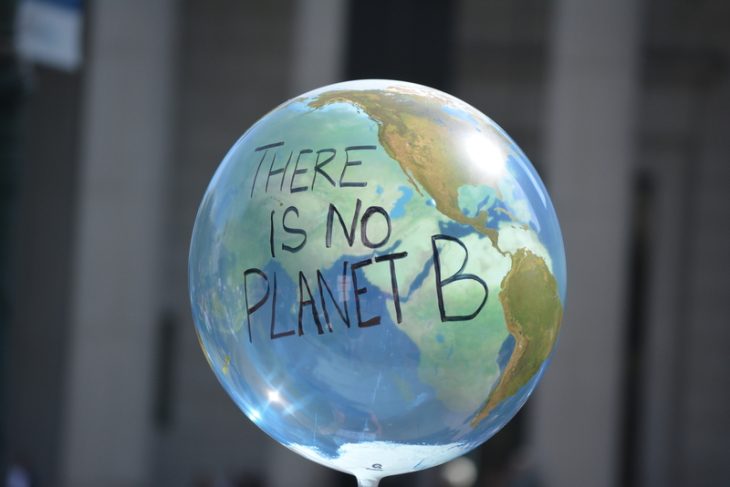Romania, the fourth country in Europe in terms of reducing CO2 emissions compared to 1990, is constantly publicly positioning itself as a country willing to be the spearhead of the transition in order to prevent climate change, accepting far too often, far too easily , some of the objectives proposed by the EU in this field. But, analyzing the situation in which Romania finds itself in terms of the fulfillment of the assumed objectives (based on the data from the EU Commission reports), it can be observed that in most directions we are in the group of countries that occupy the last places in the EU, it is shown in an analysis of Intelligent Energy Association.
Biofuels
Italy is the largest consumer of biofuels and Spain is the largest user of biofuels. Italy is also the largest consumer of Tier 2 (waste cooking oil) based biofuels, followed by Germany, Spain, the Netherlands and Sweden. Other Member States (Romania and Latvia) did not consume second-generation biofuels (waste cooking oil and vegetable residues), while Austria consumed only a small amount (<1 ktoe).
Biogas
In 2020, according to reported data, Germany was the largest producer of biogas, with 52.8% of the total amount produced (7,765 ktoe), followed by Italy, with 13.7% (2,018 ktoe), France, with 7 .4% (1,090 ktoe), by the Czech Republic (4.1%, 595 ktoe) and Denmark (3.4%, 505 ktoe). In 2021, Germany maintained its position as the largest producer, accounting for 50.4% of total production (7,518 ktoe), followed by Italy (13.9%, 2,078 ktoe), France, 9.4% (1,404 ktoe), and by Denmark (4.2%, 625 ktoe), which surpassed the Czech Republic (4.0%, 591 ktoe) in terms of biogas production. Belgium, Finland, Hungary and Sweden reported no biogas production in either 2020 or 2021, while Estonia, Romania and Slovenia reported modest biogas production only in 2021, at a level that places them on the last place in Europe.
Increasing cross-border capacity
The completion of various projects of common interest should further improve the levels of interconnectivity. However, seven Member States (IE, EL, ES, FR, IT, CY, RO) were below the 2030 interconnection target, with four (IE, ES, IT, CY) also , below the interconnection target for 2020. Additional efforts are needed to meet the 2030 targets, especially with regard to the timely completion of planned cross-border projects.
Renewable Energy
On average, the global share of energy from renewable sources has increased by 0.67 percentage points per year since 2010. Achieving the EU’s new 2030 target of 42.5% (and even more so the ambitious 45%) will require much faster growth in the coming years. Progress has been particularly important in the electricity sector, with an increase in the share of renewable energy sources from 21.3% in 2010 to 37.6% in 2021. Progress in heating and cooling (from 17% at 22.9 %) and transports (from 5.5 % to 9.1 %) were more modest.
Sweden achieved the highest share of energy from renewable sources (62.6%), followed by Finland (43.1%) and Latvia (42.1%). With shares not exceeding 13%, Belgium, Ireland, Luxembourg, Malta and the Netherlands recorded the lowest shares of energy from renewable sources. A number of Member States saw substantial decreases in the share, notably Bulgaria with a decrease of 6.3 percentage points and Ireland with a decrease of 3.7 percentage points (both mainly caused by a reduction in bioenergy).
Considering both implementation at national level, the following Member States in 2021 had a share below their binding 2020 renewable energy target under the original Renewable Energy Directive: France (3.7 percentage points less than the 2020 target), Ireland (3.5 pp), the Netherlands (1 pp) and Romania (0.6 pp).
Energy efficiency
In 2012, the European Union (EU) adopted Directive 2012/27/EU on energy efficiency and committed to reduce energy consumption by 20% by 2020 compared to baseline forecasts. This target is also known as the 20% energy efficiency target. In other words, the EU has committed to a primary energy consumption of no more than 1,483 million tonnes of oil equivalent (Mtoe) and a final energy consumption of no more than 1,086 Mtoe in 2020. For 2030, the mandatory target of was initially set as a reduction of at least 32.5%. This translated into a primary energy consumption of no more than 1,273 Mtoe and a final energy consumption of no more than 956 Mtoe in 2030.
Even if Romania falls under the reduction of primary energy consumption, this was achieved as a result of the closure of the industry and not of energy efficiency measures. This means that although we have met our target we are less resilient.
CO2 emissions
EU has pledged to cut greenhouse gas emissions by 40% from 1990 levels by 2030, but this target has had to be revised as some scientists have warned that implementation is needed their faster to prevent catastrophic climate change. The European Commission has proposed a reduction of emissions on its territory, by 2030, by 55% compared to 1990. Following the closure of industry in Eastern European countries, they have become champions in reducing CO2 emissions compared to 1990 and have significantly reduced CO2 emissions between 1990 and 2021. Thus, Romania is in 4th place in Europe after Latvia, Lithuania and Estonia, having in 2021 58% less emissions than in 1990. Thus, Romania has reached this target is not based on restructuring, but on closing consumers, claim the authors of the analysis.
